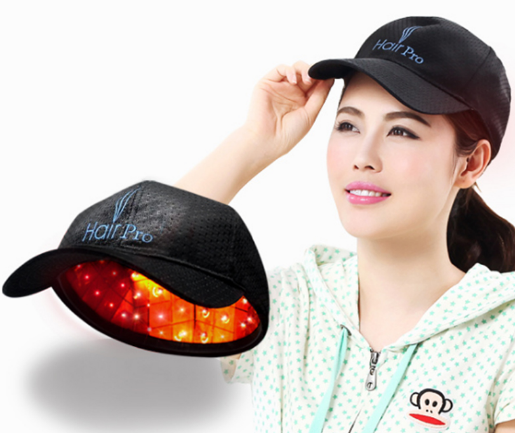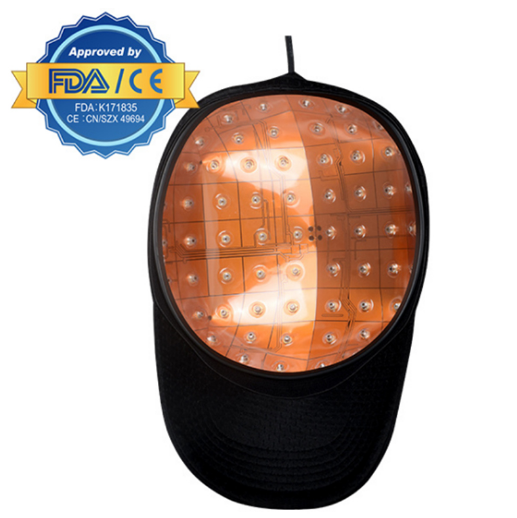Hair loss, a common concern for many individuals, has sparked a multitude of innovative solutions aiming to restore and stimulate hair growth. Among these solutions, the Hair Regeneration Laser Cap has emerged as a popular option.
hair regeneration laser cap uses a low-level laser, sometimes called a cold laser. During the treatment, this low-level laser is pointed directly at your scalp. Some studies have found that it’s effective on its own in helping to stimulate your scalp to grow new hair.
This article aims to comprehensively explore and evaluate the efficacy of Hair Regeneration Laser Caps in addressing hair loss concerns.
Does Hair Regeneration Laser Cap Really Work?
Yes, professional hair regeneration laser cap does work! It is an especially good treatment option for women and men who are beginning to experience hair thinning, a receding hairline, male pattern baldness (i.e., androgenetic alopecia) and female pattern hair loss.
Laser therapy for hair growth has a 95% success rate, and you will see regrowth results in about 4 months. This is an ideal treatment to replenish the scalp with new hair growth and rejuvenate the scalp and hair follicles with healthy blood circulation.
How Does a Hair Regeneration Laser Cap Work?
Hair Regeneration Laser Caps operate based on Low-Level Laser Therapy (LLLT). This technology involves the use of low-level lasers that emit specific wavelengths of light to penetrate the scalp tissues. These lasers stimulate cellular activity within the hair follicles, promoting circulation and encouraging hair regrowth. The treatment is non-invasive and typically involves wearing the cap for specified durations as recommended by the manufacturer.
Scientific Basis and Research Studies
Numerous scientific studies have investigated the effectiveness of LLLT in treating hair loss. These studies have indicated promising results, showing an increase in hair density and thickness among participants using Hair Regeneration Laser Caps. While individual results may vary, the overall trend suggests a positive impact on hair growth.
Benefits of Hair Regeneration Laser Caps
The utilization of Hair Regeneration Laser Caps offers several advantages:
- Non-Invasive Nature: Unlike surgical procedures, Laser Caps provide a non-invasive approach to stimulating hair growth, making them a preferable option for individuals averse to invasive treatments.
- Convenience: The portable nature of these caps allows users to undergo treatment at their convenience, eliminating the need for frequent visits to clinics.
- Safety: LLLT technology used in these caps is generally considered safe with minimal reported side effects, ensuring a risk-free treatment experience for users.
Factors Affecting Efficacy
While Hair Regeneration Laser Caps have shown promising results, several factors can influence their efficacy:
- Consistency and Compliance: Adhering to the recommended usage guidelines and maintaining consistency in wearing the cap as instructed is crucial for optimal results.
- Individual Variability: Hair regrowth patterns can vary among individuals due to genetic predispositions, underlying health conditions, and differing responses to treatments.
Combination Therapies for Enhanced Results
In some cases, combining Hair Regeneration Laser Caps with other hair regrowth treatments, such as topical solutions or oral medications, may yield enhanced results. Consulting with a healthcare professional or a dermatologist can provide personalized recommendations based on individual requirements.
Realistic Expectations and Patience
It’s essential to manage expectations regarding the outcomes of using laser cap for hair regeneration. While many users have reported positive experiences, noticeable results may take time to manifest. Patience and consistent use are key factors in achieving desired results.
Conclusion
In conclusion, Hair Regeneration Laser Caps offer a promising solution for individuals experiencing hair loss. Backed by scientific research and a non-invasive approach, these caps provide a convenient and potentially effective option for stimulating hair growth. However, individual results may vary, and it’s crucial to maintain realistic expectations while remaining consistent with the recommended treatment regimen.




